- Home
- Bill James
The Man from the Train Page 3
The Man from the Train Read online
Page 3
The first thought was that Schultz had found his wife with another man, had murdered the two of them, then killed the children and taken his own life. This theory was abandoned when it was discovered that Schultz had been hit in the back of the head with an axe or some other blunt instrument, and also that his body was on the bottom of the body pile, suggesting that he may have been the first to die.
The extra dead man in the house was Walter Eichman, who had been living with the Schultz family and . . . well, we have to get to it sometime . . . was apparently enjoying intimate relations with Alice Schultz. Eichman was not her only lover, nor even her favorite. Whether their relationship is more accurately described as “open marriage” or “sex work” is not entirely clear, but men who were not her husband often gave Mrs. Schultz expensive gifts.
Alexander Horton Sheffield was one of those men. He signed his name “A. H.” and went by the name of Sandy, the same name as the Schultz’s baby. Sheffield, although he was a married man with two children, had lived in the Schultz house until Eichman moved in. Sheffield was tall, handsome, and came from a family with money. Shopping recently for jewelry, Alice Schultz had volunteered to the jeweler that Sheffield was the only man she had ever loved, or ever would. Eichman—also married—was the brother-in-law of the man who actually owned the house. While Sheffield lived there they had told neighbors that he was Mrs. Schultz’s stepbrother, although this was not true. A previous landlady had evicted the family because of the odd relationship between Alice and Sandy. After moving out, Sheffield had continued to visit Mrs. Schultz frequently.
About twenty-four hours after the bodies were discovered, Sheffield was arrested in connection with the crime. He would live in the shadow of the charges for more than three years, although there was never any real evidence against him. Sheffield had attended the “dance” at the Schultz house on March 11, in the company of a seventeen-year-old girl; Sheffield was twenty-seven. He had returned for a visit on the following Sunday, under somewhat odd circumstances. Passing by the Schultz house, he had seen a cow wandering loose, about to destroy the laundry hanging on the line. He knocked on the door but was unable to rouse the family, because, of course, they were all dead. He had put the cow back in the pasture, and then tried again to get someone to come to the door. That failing, he had made a curious remark to a neighbor to the effect that the family must all have gone boating and had drowned. Sheffield also told police that he had seen the three guns stacked in the Schultz house on Friday night, and had seen them under the house on Sunday. None of the weapons had been fired in a long time.
Sheffield, who worked as an engineer for a brewery, emphatically denied any knowledge of the crime, and gave a rational explanation for the curious remark to the neighbor. He said that he knew that the family intended to go boating on Saturday. When the family seemed to have disappeared, his only thought was that they had not returned from the boating expedition. The explanation made sense, and Sheffield was released at the time.
Eichman was found with a mosquito net covering his head, and Bessie with her head shoved down into the bedclothes. The sheriff theorized that either the murderer had spent considerable time in the house after the crime, or he had returned to the house a day later. All of the bodies had been found stacked in one room, but large pools of dried blood were found in a different room. There were no indications of a robbery. The house had not been ransacked, and no weapon was found in the house. An axe was later found in a nearby well, with bloodstains still visible on the handle, although the axe had been sitting partially submerged in water.
We will see this syndrome many times in this book: that the sheriff fairly quickly understood what had happened here, but then went into denial about it. Several days into the investigation, the sheriff told a reporter that the only thing he could figure was that the crime was committed by a “fiend who may have developed a homicidal mania and satisfied his lust for blood,” and who had disappeared via the train track after the crime. That was, in fact, exactly what had happened: The Man from the Train was a homicidal maniac with an insatiable lust for blood, and he had hopped a freight train and skipped town four days before the crimes were discovered.
Among all of the crimes in this book, this is one of those that we are most certain was committed by The Man from the Train. There are triggers for us, beyond the obvious ones like an axe, midnight, the murder of an entire family in one event, and the extreme proximity to the railroad, things that are like flashing lights saying “this is the guy.” This event has four of those markers:
1. The heads of the victims being covered with cloth or other items, both before and after the crime.
2. The house being sealed up tight, with the window shades all drawn, at the conclusion of the crime.
3. The presence of a prepubescent female, essentially nude, among the victims.
4. The bodies being moved around the house postmortem for no obvious reason.
As time passed the sheriff began to feel pressure to solve the crime, and began to rummage about for a prosecutable candidate. The sheriff was Archie Anderson. He was sheriff of Harris County for a long time, colorful, and information about him can still be found on the Web.
Some weeks after the murders a woman named Lydia Howell (name also reported as Powell) had a mental breakdown. She had been at the party the night the Schultzes were murdered and was much affected by the murders. She was convicted of lunacy and sent to an insane asylum.
Later still, a man named Frank Turney was arrested in connection with the crime; he had also been at the party. Pressured by police, Turney “confessed” to his involvement in the murders, and implicated Sheffield as well as Lydia Howell. His story was that the three of them had waited after the dance until the family fell asleep, and that Sheffield had murdered the family with a window weight while he guarded one door and Miss Howell guarded the other. Turney said that he knew nothing about the murders until after the deed was done. In July 1911, more than a year after the crime, Sheffield and Turney were indicted by a grand jury. Sheffield was released on bond in October of that year, and was scheduled to go on trial for the murders on December 4, 1911.
It appears that Turney was a vulnerable man who told police the story they wanted to hear after being pressured and perhaps beaten by the police, and also promised by the police that he would not be prosecuted. Once he was out of police custody he began to say that the story he had told police was not true. After he reneged on the account, the police attempted to prosecute him as well as Sheffield. But without Turney’s story, they had no case against Sheffield or Turney; all the evidence they had, other than the odd relationship between Alice and Sheffield, was Turney’s story, which pretty much everybody knew was a police fabrication.
In December 1911, Sheffield was free on bond, but Turney, who had accused Sheffield under a promise of immunity, remained in jail. Sheffield’s trial was postponed from December until the following April, and then postponed until October. The prosecution was stalling for time, still hoping to put together a case somehow. In October 1912, Turney was released from custody, and the prosecutor acknowledged that his confession would not hold up in court. In May 1913, three years after the crime, the charges against Sheffield were quietly dismissed.
Despite his blatant infidelity, Sheffield’s wife stuck with him throughout the ordeal. He returned to his employer, had another son, and lived almost sixty years after the crime, passing away in 1968. Lydia Howell regained her sanity, was released from the insane asylum in 1913, and left Houston Heights for unknown places in 1916. The house at 732 Ashland Street no longer stands, and the nearby railroad line is now a bike path.
CHAPTER IV
Marshalltown
The Iowa farm of James Hardy, aged sixty-four, rested in a kind of no-man’s-land nearly equidistant from a ring of small towns and towns too small to quite be towns: Van Cleve, Melbourne, Baxter, Newton, Laurel, Kellogg, Luray. The farm was about four miles from the railroad—with two exceptio
ns the farthest distance from the railroad of any crime that will be discussed in this book. The railroad angled southwest out of Marshalltown, stopped sometimes in Luray and sometimes in Melbourne, and then headed west.
On Sunday morning, June 5, 1910, James Hardy and his son went to the barn and discovered that one of their horses, a bay horse named Old Kit, had been saddled and bridled, ready for a trip, although no one in the family had done this. They were alarmed by the incident, which strongly suggested that someone had intended to steal the horse, and, at a minimum, demonstrated the presence of an intruder on the farm. They decided to sit up that night and keep a watch on the barn.
Hardy’s nineteen-year-old son, Raymond Hardy, was planning to be married on the following Wednesday (June 8) to a lady named Mabel Starnes, who lived three and a half miles away. After supper on the evening of June 5, Raymond went to visit his fiancée at her home. He told her about the bridling of the horse. He was there until sometime after midnight, when he returned home, presumably on horseback.
Hardy reached his home about 1:00 a.m. He struck a match to light a lamp. In the match-lit darkness, before the lamp had ignited, he saw a large pool of blood, and discovered the body of his mother, Lavina Hardy, lying halfway on and halfway off a couch. She was fifty-seven, or not; differing ages are reported for all the members of the family. Moments later he discovered the battered body of his brother Earl, aged twenty-nine. He ran to the phone and cranked the handle vigorously, a distress signal to the neighbors who shared the party telephone line. A neighbor, C. W. Preston, was the first to respond, sometime before 1:30 a.m. By the time Preston arrived at the Hardy farm Raymond had called the county sheriff, A. A. Nicholson, who lived in Marshalltown. Sheriff Nicholson arrived at the farm about 4:00 a.m., but before he did neighbors had found the body of James Hardy in the barn, where he also had been beaten to death. A leaded gas pipe, taken from the barn, was discarded near the body of James Hardy, perhaps indicating that he had been the last to die. According to the Cedar Rapids Gazette (June 6, 1910), the neighbors “found the bodies cold, as though they had been dead for some time. All three had been killed with a piece of gas pipe and the brains beaten out.” The gas pipe, about thirty inches long, had been sharpened on one end; it was used in the winter for prying frozen manure off the ground. The Waterloo paper says, yet more graphically, that their skulls had been beaten to a pulp; another newspaper ups the ante to “mashed” to a pulp. All of the victims had been struck from behind on the right side of their heads, near the top of the head. On the wallpaper above the couch where Mrs. Hardy died was a handprint in blood, the hand pointing toward the ground, as if the killer had braced himself against the wall while beating Mrs. Hardy to death.
Raymond Hardy was arrested and held “on suspicion that he knows more than he has told” about the tragedy. The sheriff’s first theory was that Hardy’s family had objected to his marriage, but this was shown to be untrue; the two families had known one another for years, and had cooperated in planning the wedding.
“Tramps” had been seen in the neighborhood, and some people believed the murders were committed in order to facilitate a robbery. An Associated Press story dated the day the bodies were found (June 6) states frankly that “a motive for the crime is lacking.”
The funerals of the Hardy family were in Marshalltown on June 8, the day that was supposed to have been Raymond’s wedding day. They were buried in Colfax, Iowa—yet another of the ring of small towns that surrounds the murder site. It is about sixteen miles from the Hardy farm to Marshalltown.
Raymond Hardy was still in custody at the time of the funerals, and a newspaper reported that “he will be placed on trial tomorrow.” The “trial” was actually a proceeding of a coroner’s jury. Hardy was kept in custody after a search by the sheriff found bloody overalls and a bloody hat “hidden” on the property. Hardy claimed that the blood was chicken blood, but the sheriff alleged that Hardy acknowledged that he had hidden the items, supposedly from the fear that he would be accused of the crime. (A different newspaper says that the sheriff believes Hardy “made an effort to hide the overalls in the house, but was discovered and gave them up.”)
The Atlantic Evening News (Atlantic, Iowa) wrote that “the father’s body in the cow barn indicates that the murder took place early in the evening, probably about chore time.” The sheriff also pointed out that the father, murdered in the barn, had not been carrying a lantern, which indicated that the murders had been committed in daylight, which had ended about 8:45 p.m. This, again according to the sheriff, identified the son as the assailant, although an equally plausible explanation is that the murderer stole the lantern to help him make his getaway. I do believe, however, that the murders may have been committed about the end of daylight. The murderer had probably been watching the family from a hiding place in an outbuilding all day, trying to puzzle out how he would be able to overpower three adult men. When the only one of those men who was strong and healthy left the farm about a half hour before sunset, he probably sprang into action at dusk.
Milk cans carried in from the barn were scattered near Earl Hardy’s body, as if he had been attacked returning from the barn. The most likely scenario is that the murderer entered the house after Earl Hardy headed to the barn, and murdered Lavina Hardy in the otherwise empty house, then waited for Earl Hardy to return. After they were dead he went to the barn, and attacked the senior Hardy, who was a small man with severe arthritis in his left arm. The article in the Atlantic Evening News, June 7, is worth quoting at more length:
Friends of the boy and family declare it is impossible that he could have committed the crime. The bureau drawers of the house were all opened and the contents strewn on the floor. Otherwise nothing about the house was disturbed. The bodies of the young man who was killed and the father had watches on them and money in the pockets. This was undisturbed, so that robbery apparently was not the motive. All the bodies were fully dressed and the father’s body in the cow barn indicates that the murder took place early in the evening, probably about chore time.
All of the members of the family had been in poor health, other than Raymond, who was described by all who knew him as likeable and good-natured. The murders were the front-page story in the Des Moines News (June 7), which described the case as “the most profound mystery in the criminal annals of the state of Iowa” and reported that hundreds of people had come to Van Cleve to view the bodies of the slain family. Also from the Des Moines News:
The family was respected for the love and consideration shown each other. Earl, the murdered son, was weak and not able to do heavy work, and the younger boy, always strong and rugged, did double duty on the farm to save his brother. The family were renters and had but little means, but they had portioned the hardships, share and share alike. No trouble had been heard of in the family circle at any time. None had an enemy in the community.
The theme of the impoverished family carries through the newspaper coverage of the case despite constant bubbling bits of information to suggest they were not all that poor. Raymond Hardy was arrested with $35 to $40 in his pocket, which was six weeks’ wages at that time, and John Hardy apparently had more money than that in his pockets. The house in which they were murdered was decent and substantial, and they at times had hired help. The family owned at least two horses and various other livestock, and we see constant references, in accounts of the crime, to family possessions such as pistols, telephones, and carpets.
There is one mention in a newspaper of someone arrested and held in Sioux City, Iowa, in connection with the crime, and then this is never mentioned again, although it will be mentioned again later in the book. The sheriff continued to insist he had a case against Raymond Hardy, claiming inconsistent statements and that the boy had changed his story under questioning.
Such as?
How he got blood on his hat. He was wearing a grey felt hat when he visited his girlfriend. The next morning the hat had blood on it. Hardy first said that the hat
must have gotten blood on it when he hung it up on the south wall of his house, but there was no peg on the south wall, so he said he had hung it on the east wall, near where his mother’s body had been found. He said that it must have fallen off and gotten blood on it, but the sheriff said that the peg was a good two feet from the sofa where the blood was. Hardy finally said he didn’t know how the blood got there. The county attorney thought that the inconsistent stories about the hat were critical evidence.
The sheriff now asserted that Hardy’s motive for the murders was to inherit the family’s property—their livestock, machinery, and household goods—and to have a place to live with his new bride.

 I Am Gold
I Am Gold World War Two Will Not Take Place
World War Two Will Not Take Place Pix (Volume Book 24) (Harpur & Iles Mysteries)
Pix (Volume Book 24) (Harpur & Iles Mysteries) Disclosures
Disclosures The Principals
The Principals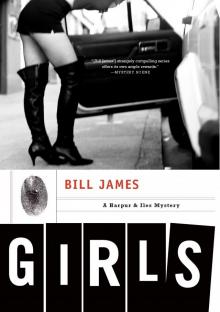 Girls
Girls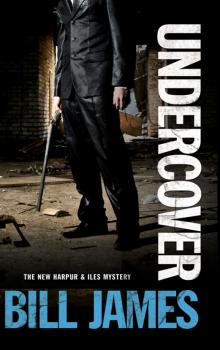 Undercover
Undercover Come Clean (1989)
Come Clean (1989)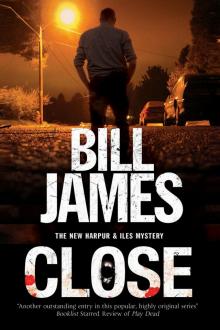 Close
Close Blaze Away
Blaze Away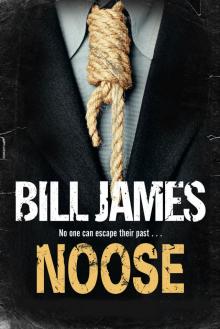 Noose
Noose First Fix Your Alibi
First Fix Your Alibi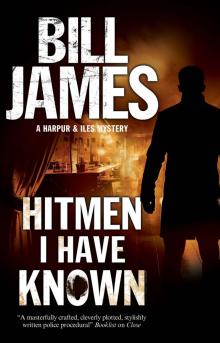 Hitmen I Have Known
Hitmen I Have Known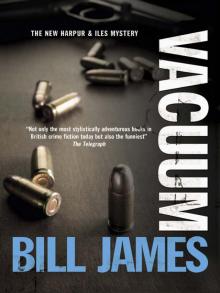 Vacuum
Vacuum Play Dead
Play Dead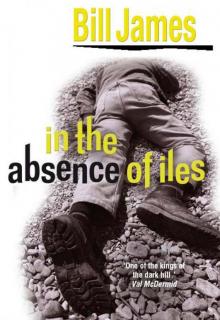 In the Absence of Iles
In the Absence of Iles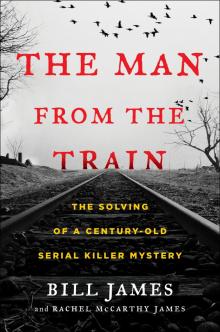 The Man from the Train
The Man from the Train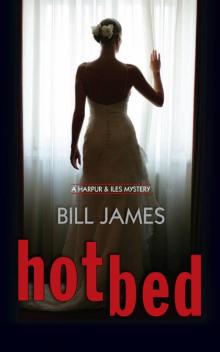 Hotbed
Hotbed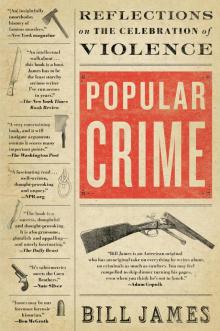 Popular Crime
Popular Crime Full of Money
Full of Money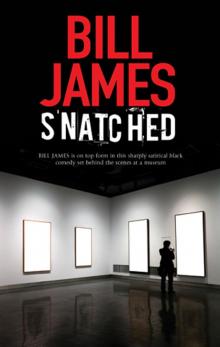 Snatched
Snatched